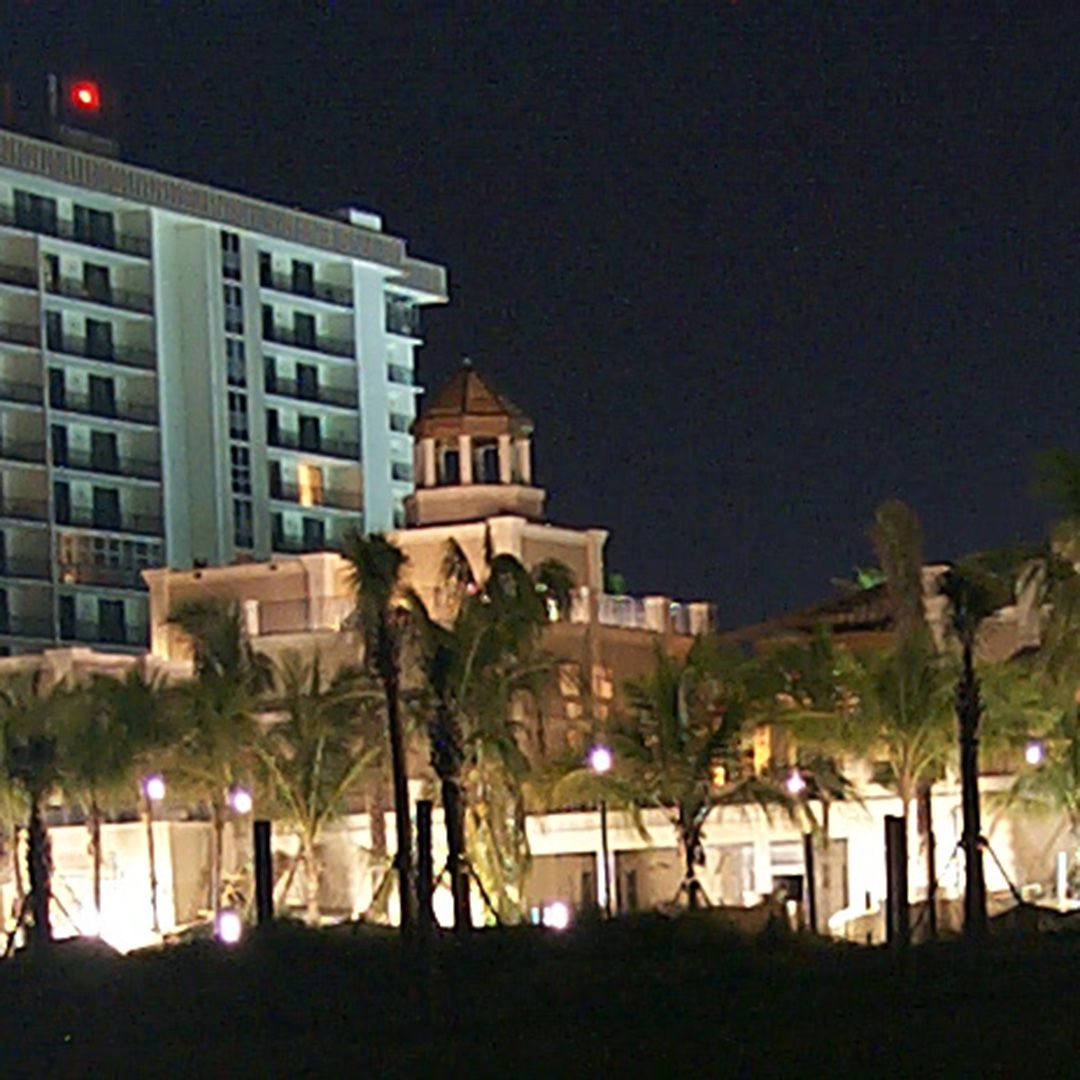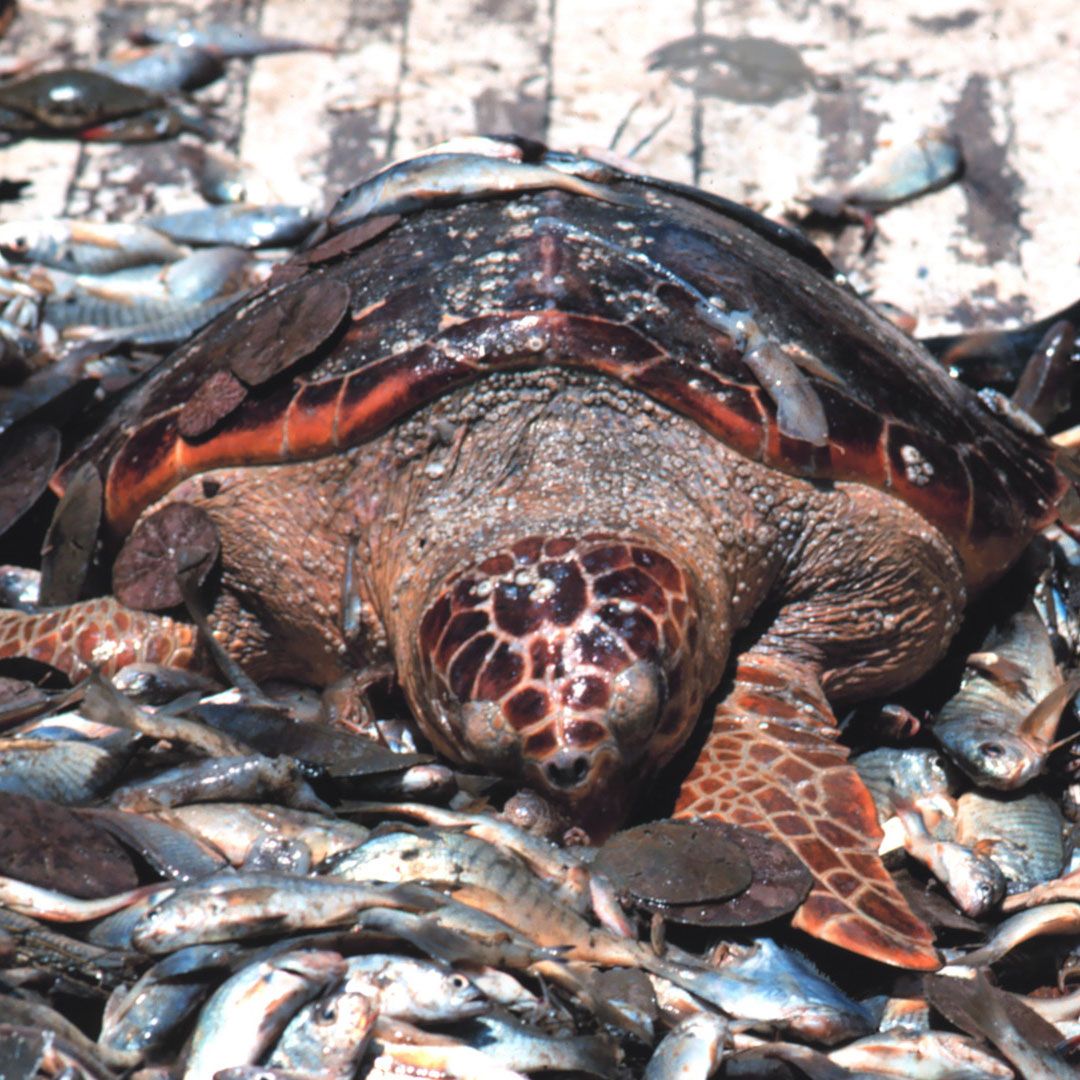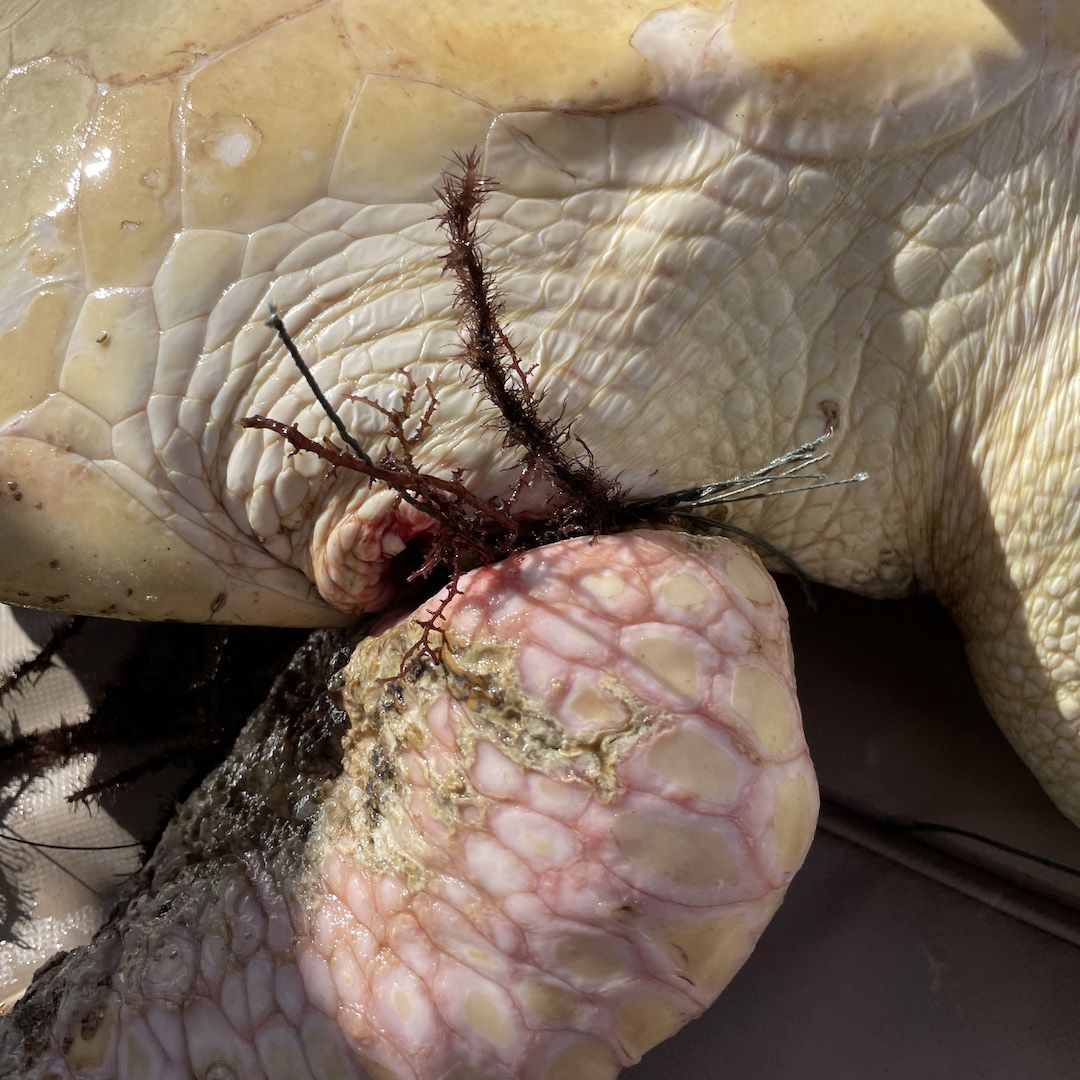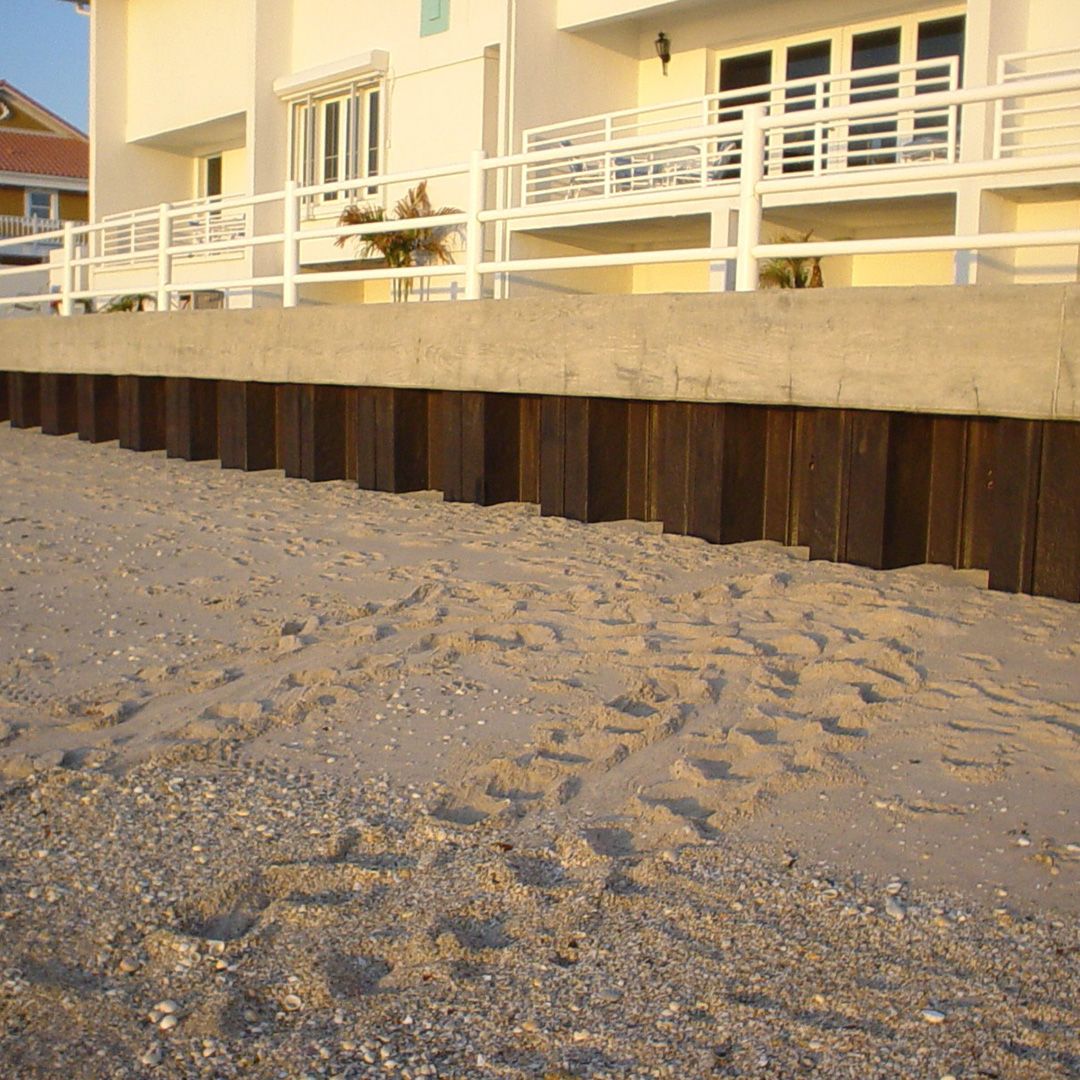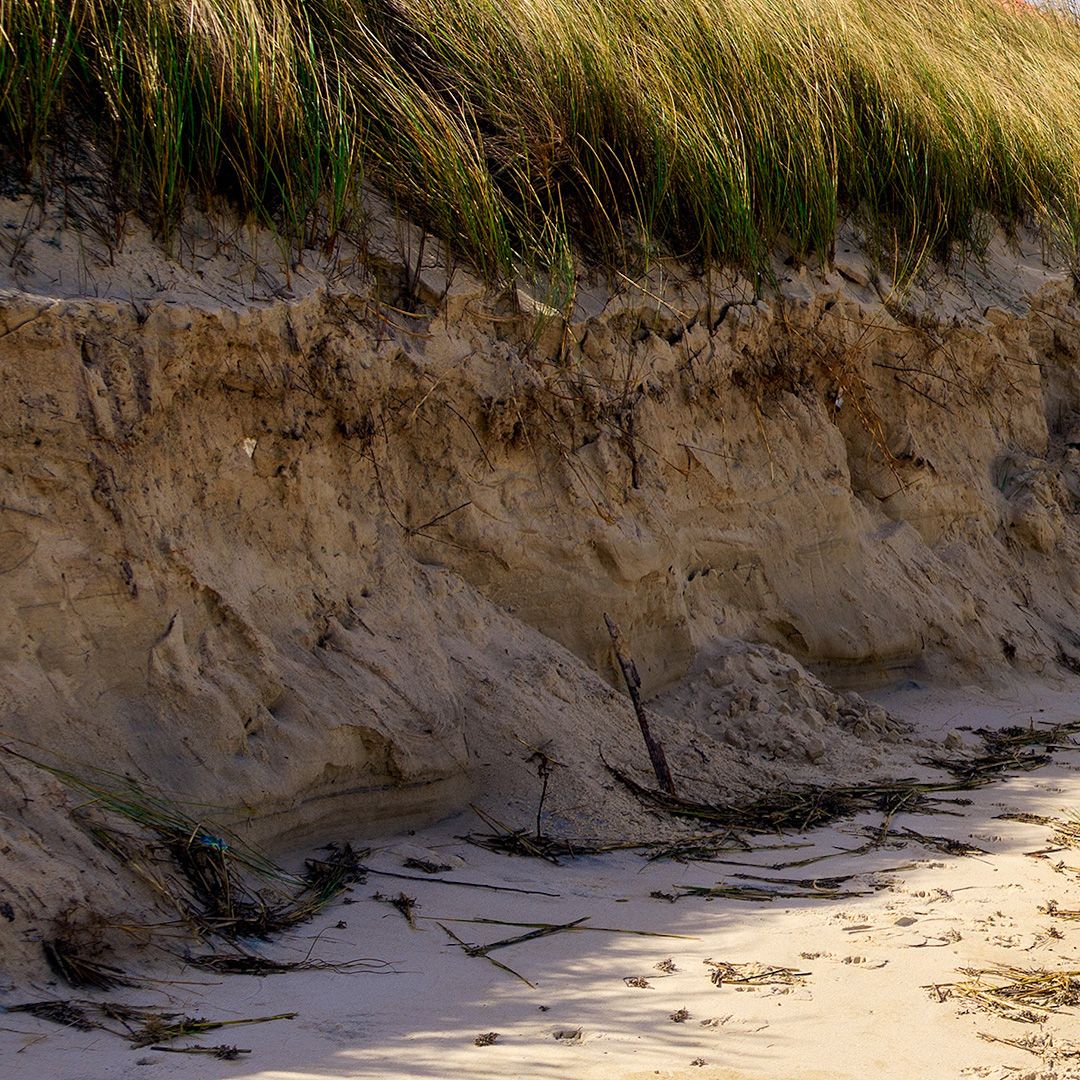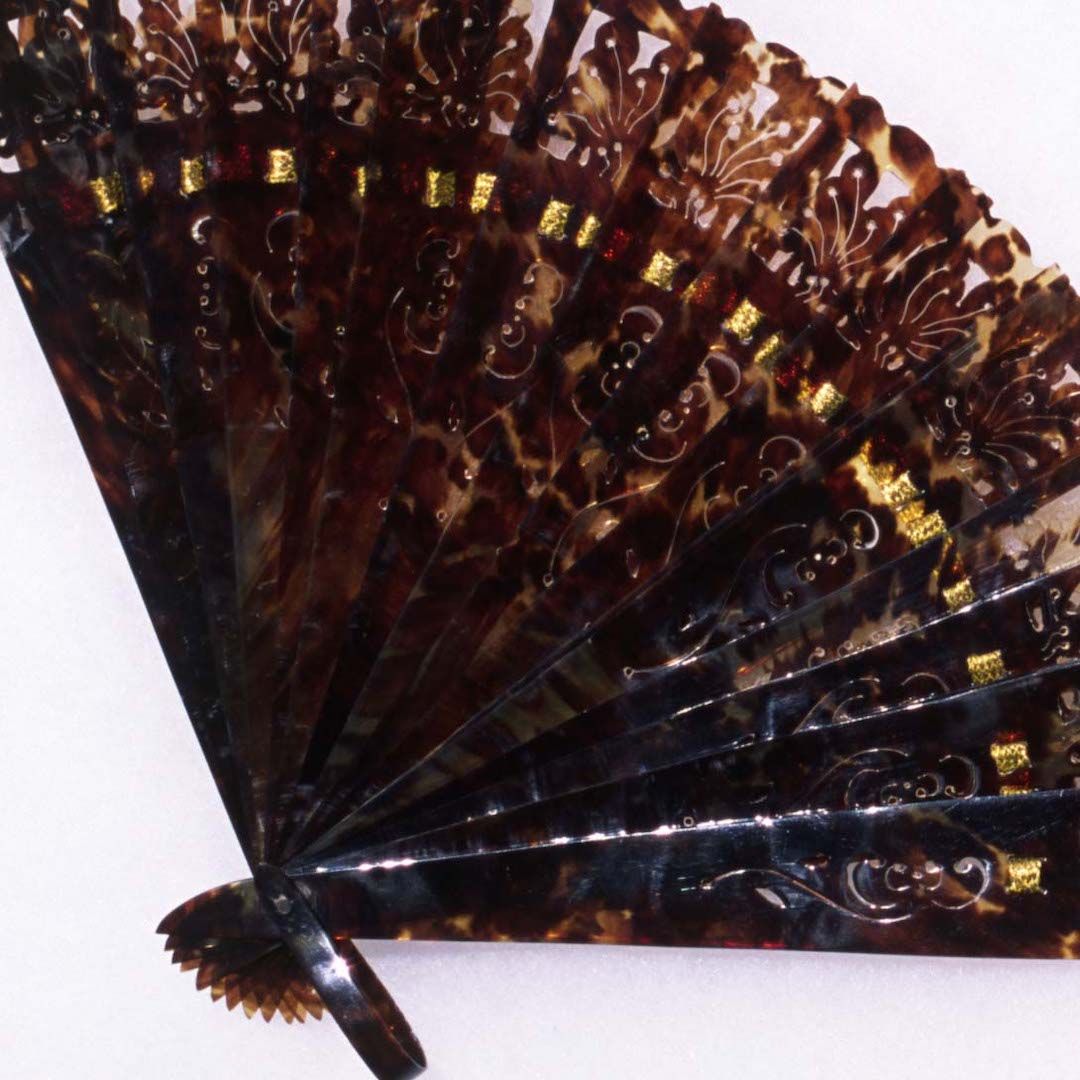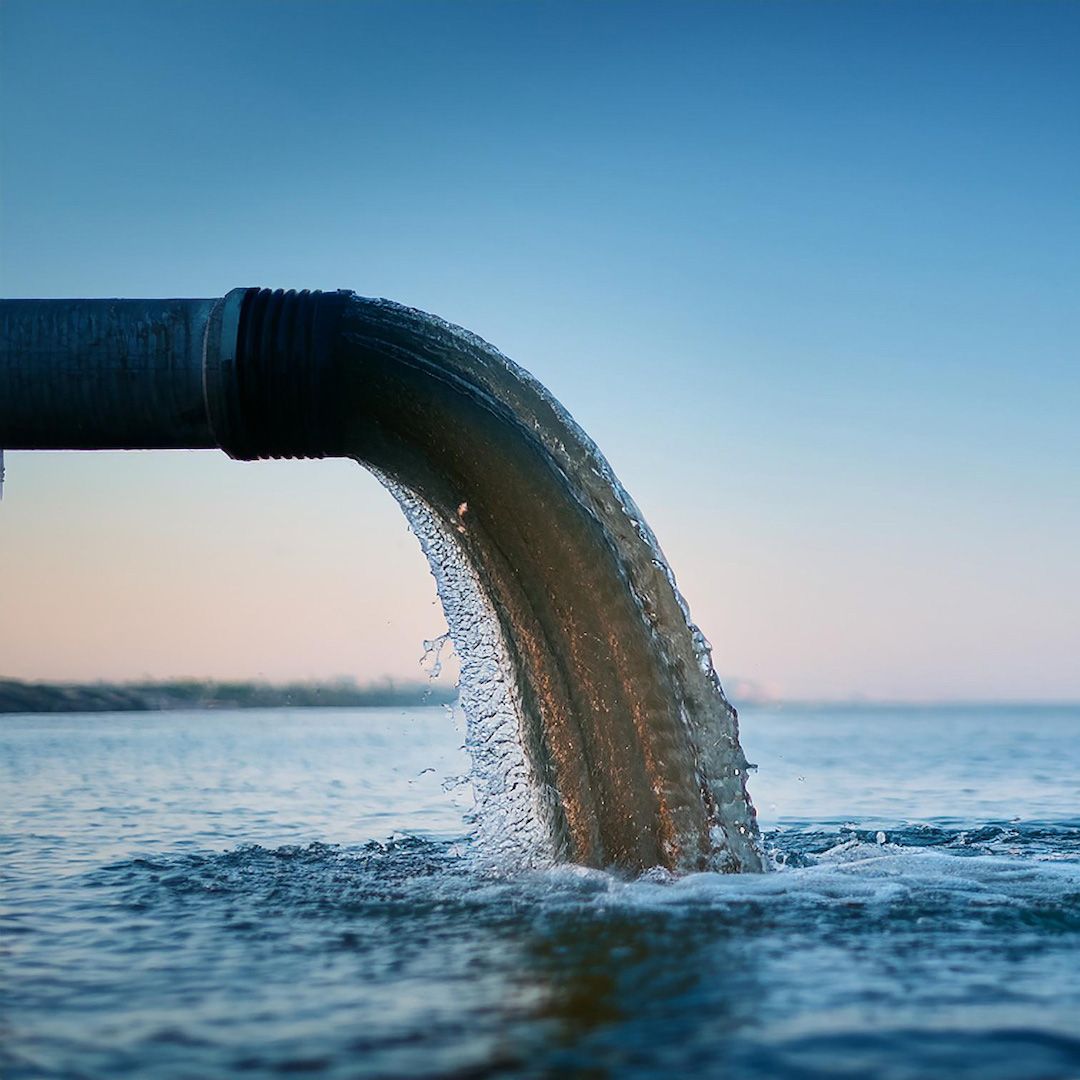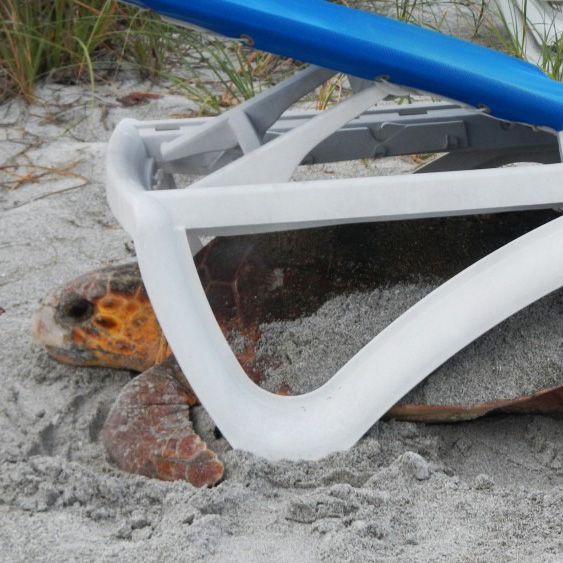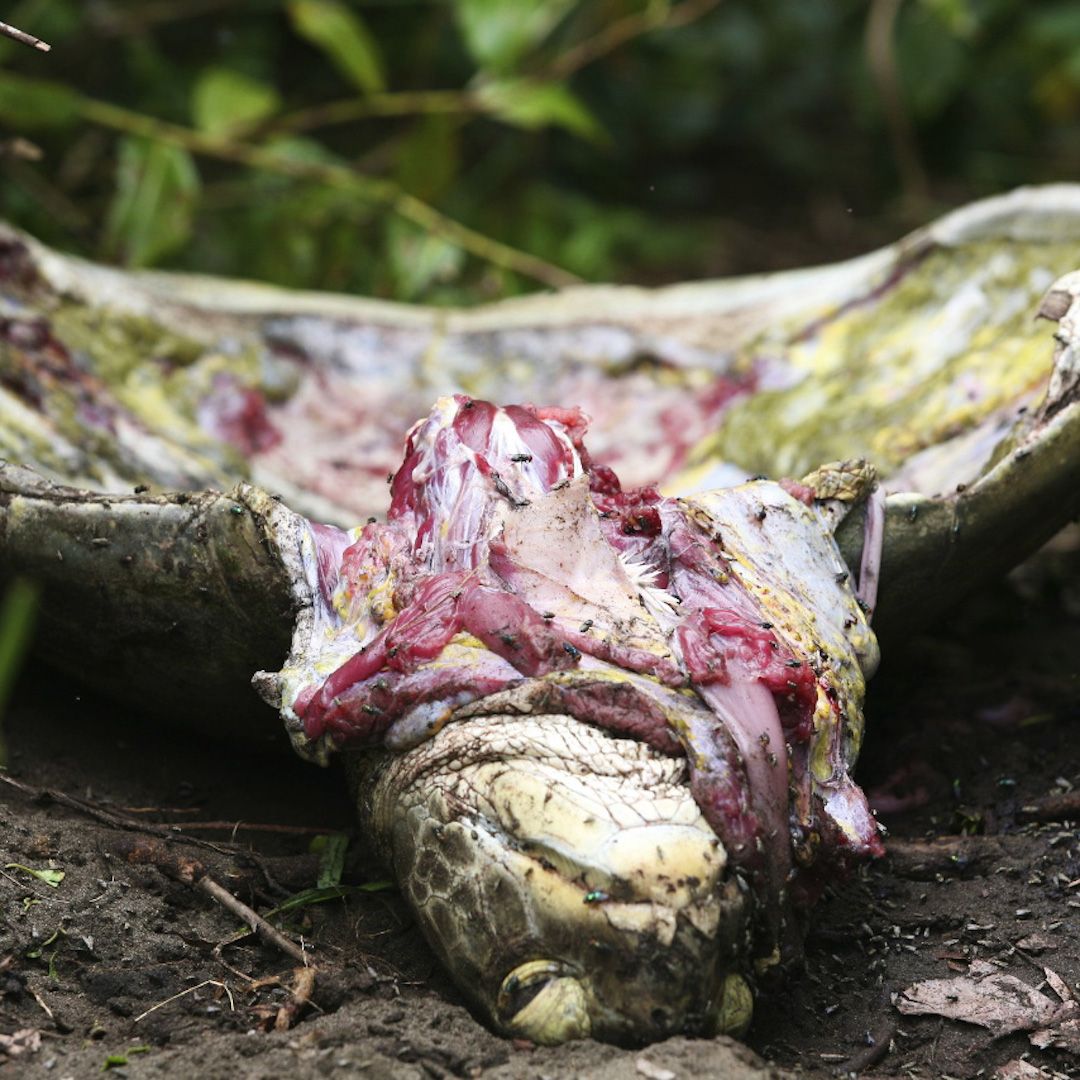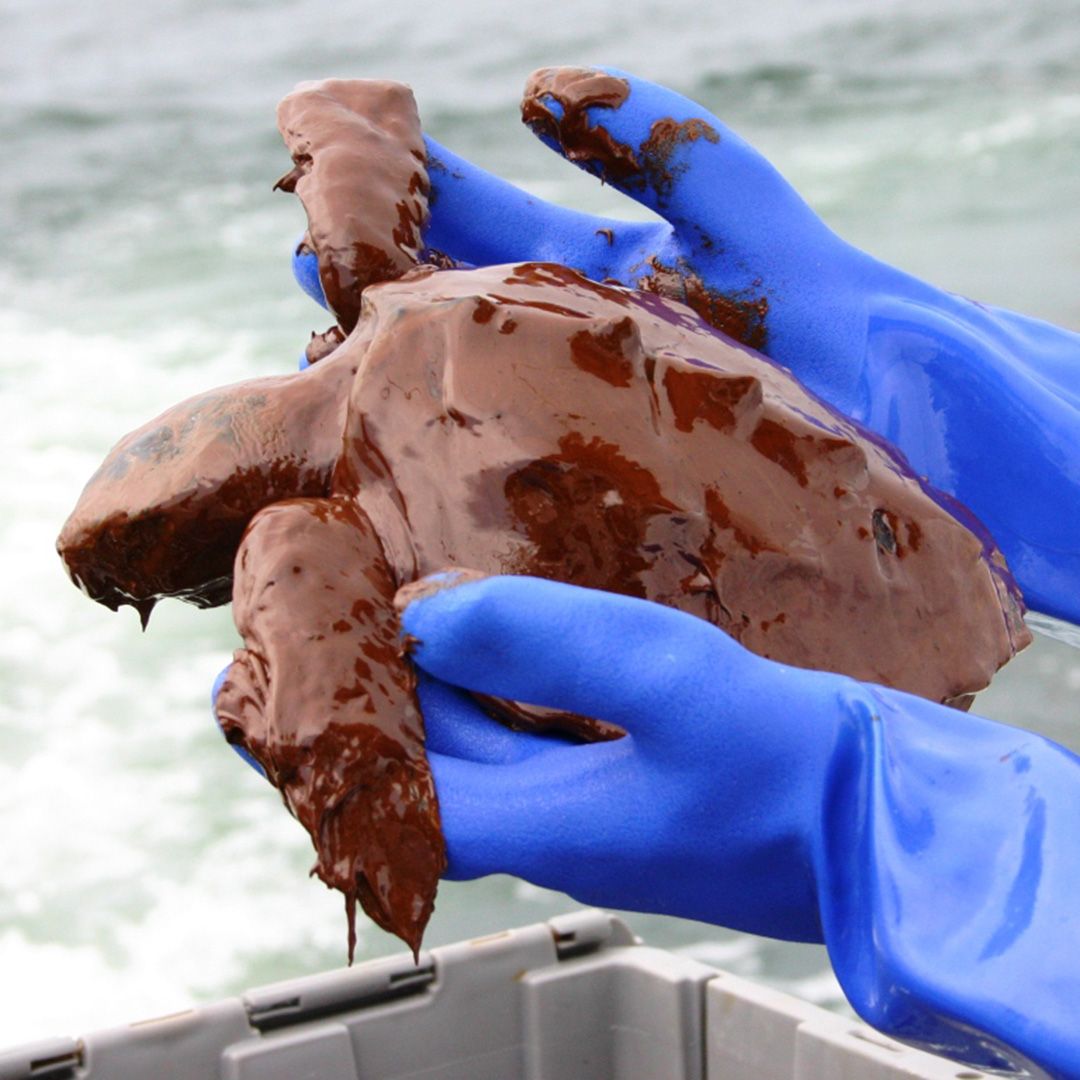Artificial Lighting
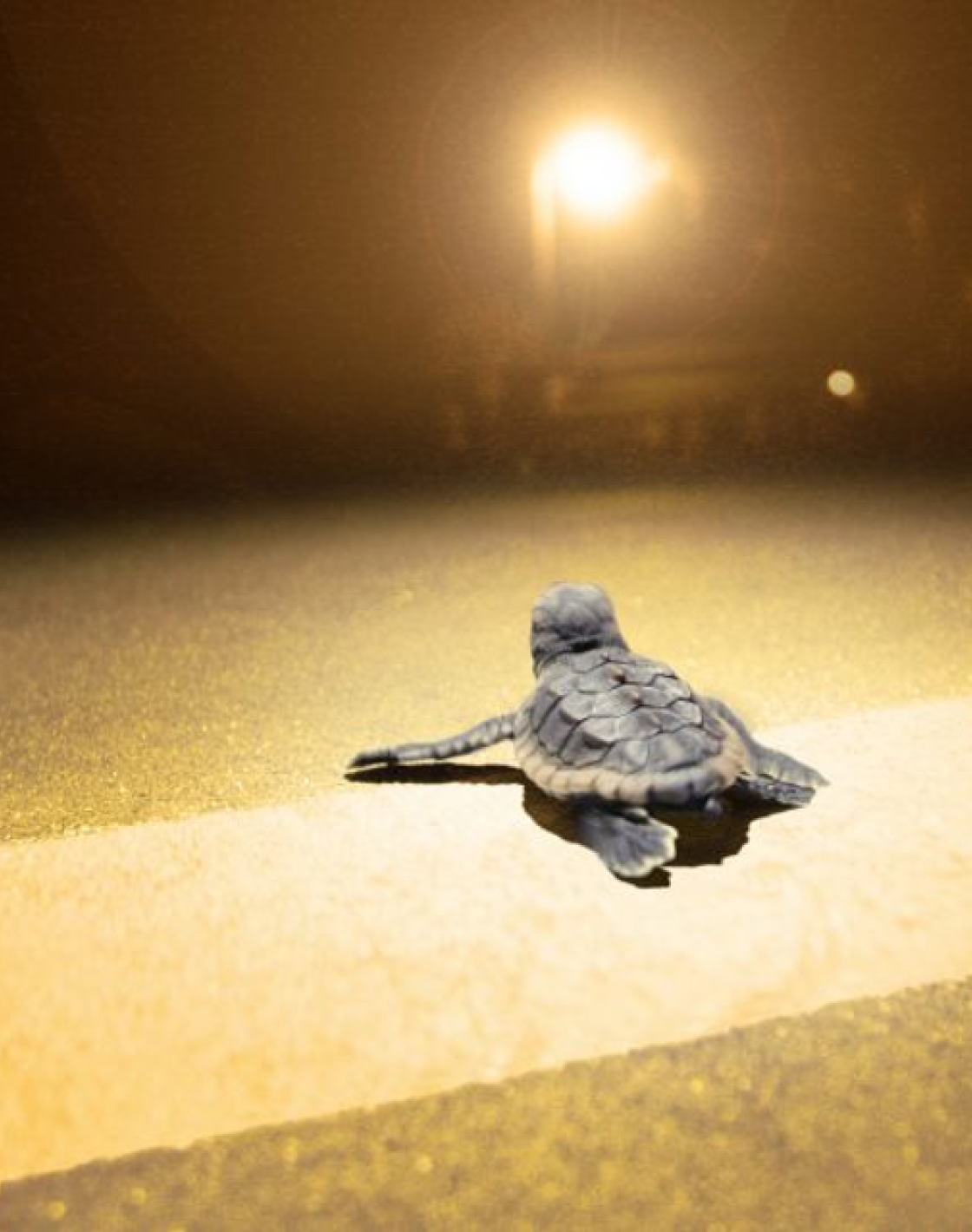
Bright Lights Dangerous for Hatchlings and Nesting Turtles
Nesting sea turtles used to have no trouble finding a quiet, dark beach on which to nest, but now they must compete with tourists, businesses and coastal residents for use of sandy beaches. Beaches are now lined with seaside condominiums, houses, hotels and restaurants. These beachfront properties often emit powerful, white lights, which can cause sea turtles to crawl toward those lights (misorient) or crawl in circles on the beach (disorient).
It was once easy for hatchlings to find the ocean after emerging from nests because the brightest horizon was always the ocean, compared to the darkened dune. Now, excess lighting from the nearshore buildings and streets draw hatchlings toward land, where they may be eaten by predators, run over, or drown in swimming pools.
Taking a Closer Look
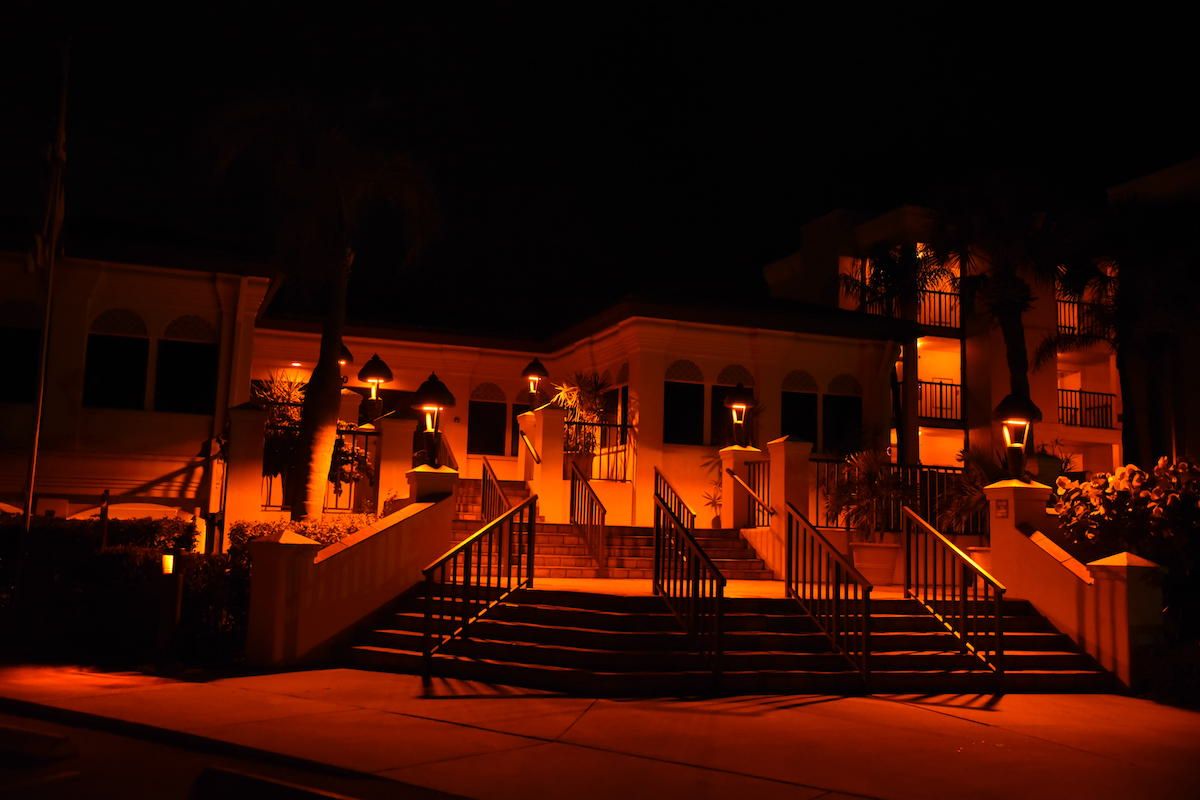
Keep it LOW, Keep it SHIELDED, Keep it LONG
Reducing the amount of artificial light that is visible from nesting beaches is the first step to reducing light pollution that affects sea turtles. Coastal communities around the world have passed ordinances that require residents turn off beachfront lights during turtle nesting season. Unfortunately, these ordinances are not always enforced and don’t address the larger problem of sky glow that occurs near cities.
Tips & Resources
Keep It Dark
When visiting the beach at night, leave portable lights (flashlights, cell phones) at home. Remove purely decorative lights from your property and turn off exterior lights when they are not in use. Prevent interior light from escaping by closing window coverings, using window film, and moving light fixtures away from the windows.
Illuminate Responsibily
Lights on your property should follow these three rules: Keep it Low, Keep it Shielded, and Keep it Long. To learn more about Wildlife Friendly Lighting, visit our Lighting page.
Let the Dunes Bloom
Protect dunes by not walking through them. Dune vegetation produces habitat for wildlife, keeps sand in place, and screens artificial light.
Know Your Ordinance
Follow the requirements in your local lighting ordinance for sea turtle protection.


